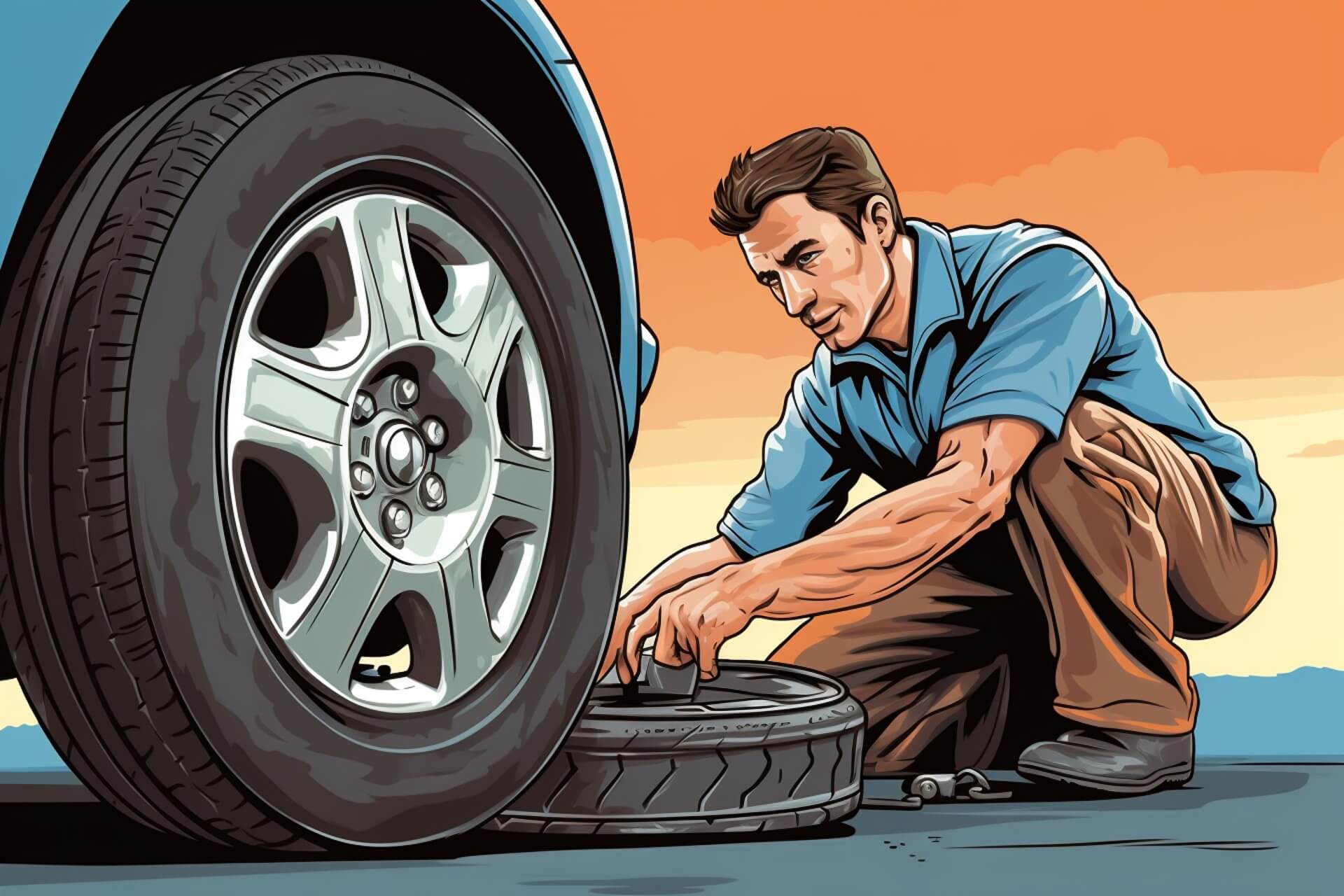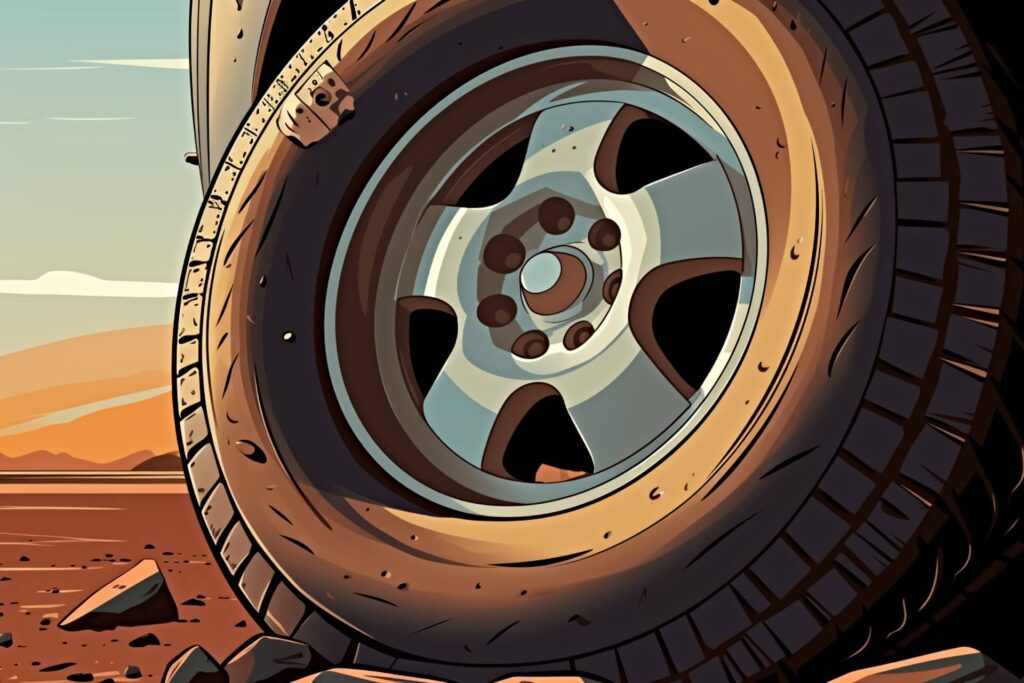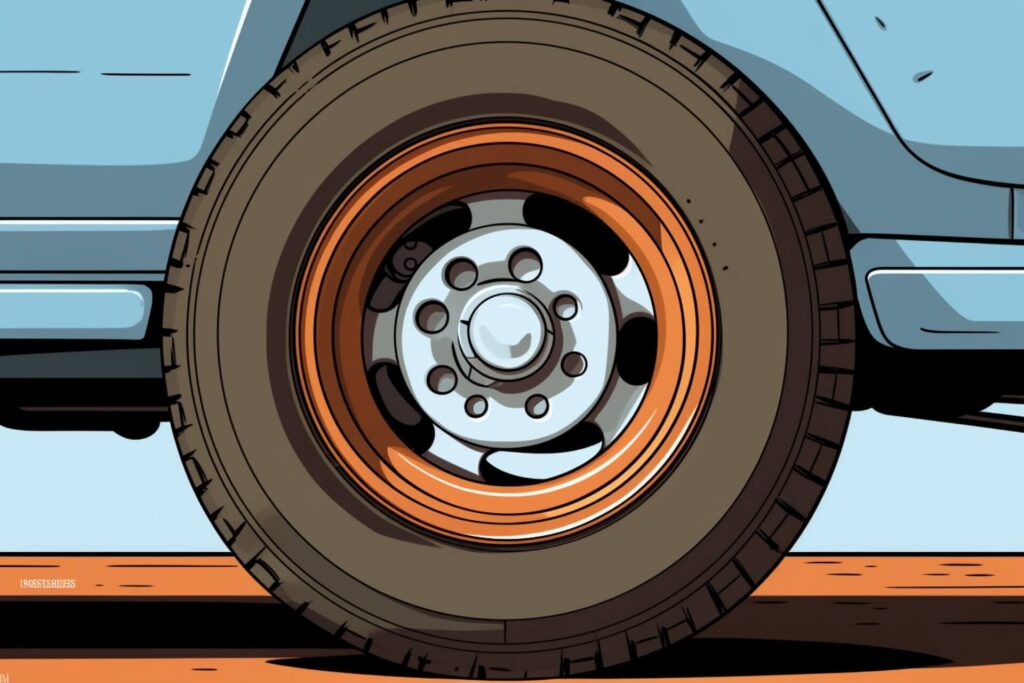How Fast Can You Drive on a Donut?
Aug 03, 2023

As an Amazon Associate, Modded gets commissions for purchases made through links in this post.
Imagine cruising down the open highway when you feel a sudden vibration. Your car has a flat tire — what a buzzkill. You get out and use your pit crew skills to take your spare tire (also known as a donut) and replace the flat. Your mechanic is an hour away, so you have to hobble to the shop. How fast can you drive on a donut?
Flat tires are an inconvenience, but we’ve got you covered. Here’s a guide for driving on a donut and staying safe for the entire ride.
How Fast Can You Drive on a Donut?
A general rule of thumb for driving on a spare tire is that you shouldn’t go more than 50 miles per hour (mph). This speed allows you to traverse safely on the highway without holding up traffic too much behind you.
How fast you can drive on a spare tire depends on a few factors. First, check your spare tire because it may have a sticker or label notifying you of the maximum recommended speed. Some modern tire pressure monitoring systems (TPMS) can tell if you’re driving a spare tire and will alert you to the maximum speed to drive on it.
How fast you can drive on a donut also depends on what type of spare tire you have. Different spare tire types are on the market, affecting your top speed. The following are the most common you’ll see:
- Temporary spare: Your temporary spare, which many call a donut, is standard in smaller cars. These vehicles don’t have much trunk space, so putting a temporary spare under the car makes more sense. Temporary spare tires are smaller and lighter than your typical tire but don’t last as long as your other tires. Your maximum speed on a donut should be about 50 mph.
- Full-size spare: If you’re lucky, your car may have a full-size spare. You’re most likely to see a full-size spare on trucks, jeeps and SUVs due to their size. You can drive closer to the speed limit or 70 mph on a full-size spare, but you should continue to exercise caution.
- Run-flat tires: Run-flat tires are less common but could benefit you. These tires have reinforced sidewalls, supporting your vehicle even if you run over a nail. Using run-flat tires means you don’t have to stop and change your tire on the side of the road. Reduce your speed to 50 mph on a run-flat tire to ensure your safety.

How Long Can You Drive on a Donut?
How fast you can drive on a spare tire directly affects your longevity on the donut. Ideally, you’ll go straight to a nearby mechanic. That means you won’t have to worry about the distance.
Unfortunately, accidents happen at inconvenient times. Your flat tire may arise in the middle of the night when the auto repair shops are closed or while you’re on a road trip and 50 miles away from the nearest mechanic.
The 50 rule comes into play for speed and distance driven. The rule of thumb for flat tires is you can drive at 50 mph for 50 miles before you need to see a mechanic. Again, you’ll ideally go straight to the shop, but you may have other emergencies to handle.
What Happens If You Drive Too Fast on a Donut?
While driving 50 mph max is what you’re supposed to do, not everybody follows this rule. Driving too fast on a donut can lead to severe problems even professional racecar drivers would have trouble with. Speeding is an issue in the U.S., contributing to 29% of all traffic fatalities in 2021.
Don’t turn your neighborhood into a Formula One race on your spare tire. Driving too fast can cause overheating and blowouts. Your spare tire can’t sustain high speeds on the road, so you need to be extra careful behind the wheel.
You must consider tire wear. Driving too fast will speed up the wear and compromise your handling, which is risky because spare tires only last approximately 50 miles. Donuts also make driving uneven and more challenging, even on the smoothest roads.
You put the spare on because your previous tire went flat, so the last thing you want to do is cause another flat tire. If you don’t have a second spare, you’re out of luck. Picture NASCAR stock cars when they get a flat tire. The broken tire begins to tear up the fender even if you drive slowly. You might not be driving a stock car around town, but you should be careful.

Does Your Automaker Matter?
Flat tires can happen to any auto manufacturer, so every driver on the highway needs to be ready with a full-size spare or a donut to replace the damaged tire. Keep in mind your automaker matters when putting your spare tire on.
Each car brand will have different spare tires in the trunk and recommendations for your speed and distance. The donut you put on your Ford F-150 Lightning will be much different than the one you put on your neighbor’s Toyota Prius. Check the owner’s manual for the most accurate information on your vehicle.
Research shows there are 128 automakers with over 7,000 models, so finding two vehicles with the same recommendations will be tricky.
How Can You Drive Safely on a Donut?
How fast you can drive on a donut is the last thing you want to worry about, but it may be a reality at some point. Here are three tips for driving safely to your next destination.
1. Start With Air Pressure
You can help yourself by preparing the spare tire beforehand. Check the tiremaker’s recommendations for air pressure and occasionally refill the tire with air. Over time, tires lose their air pressure due to permeation.
Temperature changes, especially when it gets cold, can significantly affect your tire pressure, so keep an eye on it. Most manufacturers recommend keeping the pounds per square inch (psi) between 30-35 psi for safekeeping.
2. Keep It Light
Spare tires are typically lighter than the tire you removed from the car. Your car fundamentally changes when you put the spare tire on, so keeping the load light is best.
If you’re on a road trip, you may be unable to leave things behind. However, if you can help it, refrain from towing anything. Towing impacts your tires and suspension, so avoid hauling when you have a donut on.
3. Trail Behind Drivers
Experts recommend you use the three-second rule on the highway to keep your distance. This method means keeping a three-second distance between you and the car in front of you. If we’re being honest, most drivers don’t follow this rule. However, it helps in case you lose control of your vehicle.
4. Stay in the Slow Lane
While this rule may go without saying, it’s worth a reminder — stay in the slow lane with a flat or spare. On the highway or interstate, the road will be anywhere from two to six lanes for most of your trip. The right lane is for the slowest drivers, and that’s where you should be on your donut.
Slower traffic should stay on the right lane anyway, but only some people follow this rule. Violations can get you in trouble in 27 states, so be extra careful when driving on a spare tire.
5. Ease Into Corners
Your car’s handling will differ after putting on your spare, so be careful when approaching a corner. How fast you can drive on a donut doesn’t matter when your rear tire causes you to spin out of control and hit another vehicle. Give yourself ample time to brake by paying attention when narrow turns come up.

How Are Spare Tires Different?
We’ve discussed how fast you can drive on a spare tire, but how exactly are spare tires so different? Here are three distinctions you need to know.
1. Size
The most crucial distinction between spare and regular tires is the size. Your average spare tire is typically an inch or two smaller in diameter than the four tires on your current car. The inch difference may be slight, but it’s a big deal. Even an inch difference changes your car’s balance and reduces its speed and towing grade.
Why are donuts smaller? Tire companies make donuts smaller to save space in your trunk or under the vehicle and make them lighter for your car to carry. Being lightweight also helps the average person move the tire to the designated spot.
2. Tread Depth
One reason donuts are lighter than regular tires is their tread depth. Your typical tire has a tread depth of 0.25 inches, whereas your donut cuts the depth in half to .125 inches. The reduced tread depth means you won’t get the same grip you’re used to on the open road, so slowing your speed is even more vital.
3. Materials
Tire producers make donuts with lighter rubber and fewer steel belts than your regular tires, making them smaller and lighter to carry. Your donut will also have fewer nylon cords and fillers, compromising their durability but making them lighter.
How Fast Can You Drive on a Spare Tire?
When you’re on the road, the last thing you need is a flat tire. It doesn’t matter where your previous destination was because now it’s the nearest mechanic.
How fast you can drive on a donut or spare tire depends on your tire and vehicle, but you should stick to the 50 rule. Drive at 50 mph max for 50 miles max. Head to a repair shop ASAP for a fix.





